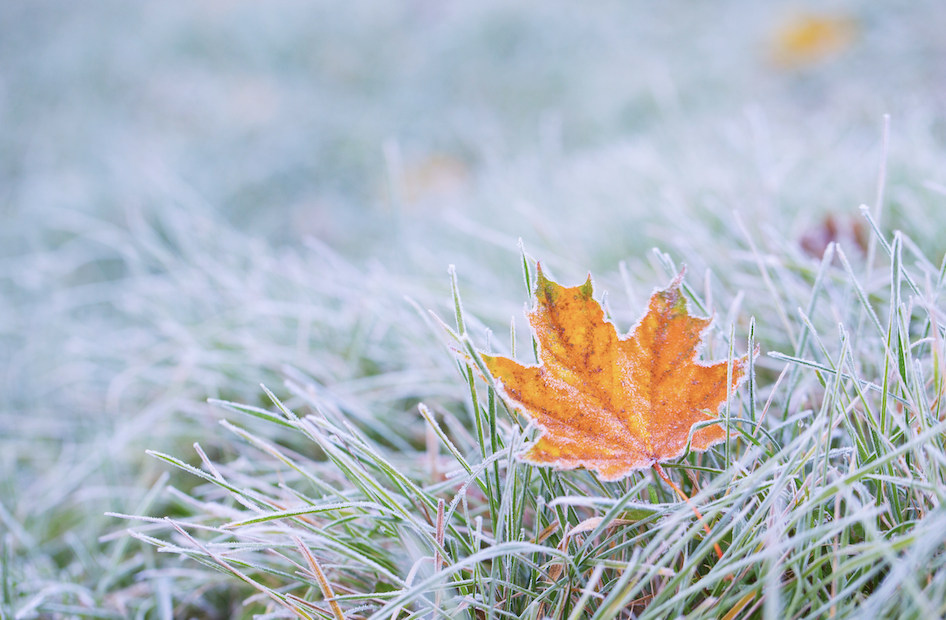
Fall has officially arrived! The leaves have turned to beautiful shades of red and yellow, the days are shorter and the temperatures are beginning to drop. Along with the cooler temps comes the potential for morning frost on the ground. Frost can range from scattered and light to hard enough to kill outdoor annuals and make perennials go dormant. Depending on how hard a frost is, along with daily temperatures, frost does have the potential to damage your yard.
Frost happens when temperatures drop below freezing (32 degrees Fahrenheit). Any water that has condensed on the ground overnight will freeze the blades of grass, making it appear to be covered in ice crystals. When temps stay above freezing, this moisture is considered morning dew. Your yard’s variety of grass will determine how well it will handle frost. For example, most Bluegrasses will be fine, but Bermuda grass can turn brown and have a patchy appearance. Bermuda grass can also die fairly quickly if temperatures don’t warm back up.
If a frost is light, ground temps and the lawn’s roots will remain above the freezing point. This means the first frost is not necessarily the end of yard maintenance. Most grass will continue to grow as long as daytime highs remain above 50 degrees. With this in mind, you shouldn’t mow 1-2 days before a potential frost, as this may damage the blades of grass. If you are keeping an eye on the weather, you may want to get that last mow in before temps stay consecutively low.
While it’s ideal to reseed your lawn six weeks prior to any expected frost, as new seedlings may not survive a hard frost, you can still seed after a frost. Grass seeds can handle extreme cold, and even snow, without harm. Even after months of cold and laying dormant, grass seeds will begin to grow when the weather stays above 60 degrees.
But what happens when that first frost comes earlier or harder than expected? There are two key things you can do to protect your lawn from frost – water it and keep off!
Water It
When news of frost is pending, watering your grass in the evening will help to avoid damage. Deeply watering your lawn prior to a frost allows moisture to evaporate slowly overnight. When the night air drops below freezing, this evaporation creates friction and heat around the grass blades and your grass will still have a slightly higher temperature thus avoiding a frost freezing the blade. This extra step may also save any immature seedlings which are very vulnerable to frost. If possible, you may also want to consider covering any immature grass for a further layer of protection just as you would any annual plantings.
Keep Off
One of the most important things to remember with frost and your lawn is to stay off it until later in the day when it warms up and the frost melts. During a frost, grass blades are, in fact, frozen. A blade can actually break, whether someone walks on it, or worse, drives across it. Any heavy object pressing on a frozen blade will cause cellular damage to the grass. Damage of the blade will show up as a white or beige edge from being crushed.
If you do experience damage to your lawn from a frost, don’t disparage – warm weather always returns and you can reseed.
